Best Wisconsin Colleges & Universities

Per the Lumina Foundation, 47.1 percent of working-age residents in Wisconsin have earned a degree or credential. In the coming years, Wisconsin expects to help more students reach their goals through initiatives aimed at helping adult learners go back to college as well as provide college counseling services for students who might be accumulating credits that don't apply to their degree. Students looking to attend college in Wisconsin can start their search with our comprehensive guide. We looked at a variety of factors in higher education, including tuition rates, financial aid availability, alumni incomes, graduate debt and cost of living. We also explored college planning options available through the state as well as resources to help students learn more about their higher education choices.
Ranking Wisconsin's Best Colleges
Sometimes, the enormous amount of information available for each college can be overwhelming. That's why rankings are such a big help to aspiring students. We took all the pertinent information about colleges in Wisconsin, compared it side by side and created a rankings list based on things that matter most, like tuition, financial aid availability and earnings after graduation.
Rankings Methodology
- Located in Wisconsin
- Public or private not-for-profit
- Institutionally accredited
- At least 10 total programs
- Median annual alumni earnings 10 years after entering the college
- In-state tuition and fees for undergraduates
- Student/teacher ratio
- 6-year graduation rate
- % of students receiving institutional financial aid (first-time, full-time undergrads)
- Average amount of institutional aid awarded per student (first-time, full-time undergrads)
- Availability of placement services upon completion
- Availability of academic/career counseling services
- Availability of employment services
- 3-year student cohort loan default rate
Integrated Postsecondary Education Data System (IPEDS): National Center for Education Statistics
Latest 'Final Release' data available as of Fall 2016 College Scorecard: U.S. Department of Education
2-Year Programs
Chippewa Valley Technical College
Mid-State Technical College
Fox Valley Technical College
Lakeshore Technical College
Western Technical College
Waukesha County Technical College
Northeast Wisconsin Technical College
Southwest Wisconsin Technical College
Moraine Park Technical College
Wisconsin Indianhead Technical College
Milwaukee Area Technical College
Gateway Technical College
Blackhawk Technical College
Northcentral Technical College
Nicolet College
Lac Courte Oreilles Ojibwa Community College
4-Year Programs
University of Wisconsin-Madison
Marquette University
Saint Norbert College
Viterbo University
Lawrence University
Concordia University-Wisconsin
Carroll University
University of Wisconsin-La Crosse
Ripon College
Beloit College
University of Wisconsin-Eau Claire
Cardinal Stritch University
Carthage College
Edgewood College
Milwaukee School of Engineering
University of Wisconsin-Whitewater
Marian University
University of Wisconsin-Stout
University of Wisconsin-Platteville
Wisconsin Lutheran College
University of Wisconsin-Milwaukee
Lakeland College
University of Wisconsin-Stevens Point
Silver Lake College of the Holy Family
Mount Mary University
Alverno College
University of Wisconsin-Oshkosh
Milwaukee Institute of Art & Design
Northland College
University of Wisconsin-River Falls
Ottawa University-Milwaukee
University of Wisconsin-Green Bay
University of Wisconsin-Superior
Maranatha Baptist University
University of Wisconsin-Parkside
College Readiness Programs in Wisconsin
When planning for college, it's great to have strong resources and programs at hand. Wisconsin is dedicated to helping students achieve higher education attainment and, to that end, provide programs that focus on academic and financial planning, college accessibility for underserved students and career options for current students. Here are a few of the programs offered through the state.
Precollege Scholarship ProgramThis program targets students in middle and high school and provides them with a college experience. In order to be eligible, students must receive or be eligible to receive free or reduced lunches, be in sixth through 12th grade and meet the preadmission requirements at the college they want to explore. Students will then be invited to attend a college program, either residential or non-residential, at a variety of public or private colleges in the state. The length of the programs, as well as the content, will vary from one college to another.
State Talent Search ProgramsThese services are available to anyone who has an interest in colleges in Wisconsin, including high school students and their parents, adult learners, educators and community members. This broad, comprehensive state program focuses on helping individuals understand how to apply and enroll in college, how to find financial aid and how to define educational goals. Services include everything from help with filling out the FAFSA to promoting scholarships to helping aspiring students with career readiness.
Wisconsin Students GO 2 CollegeThis is Wisconsin's version of the American College Application Campaign, a program that helps high school seniors navigate the murky waters of the application process. Low-income students and those who are the first in their families to go to college are especially targeted for this program. Held in 50 high schools across the state, the application campaign happens during school hours and helps ensure that students file at least one full application for college in Wisconsin.
Cost Analysis of Attending Wisconsin Colleges
Understanding tuition and financial aid is a very important part of the college search. Though tuition might seem steep, it is important to remember that very few students pay full tuition as most receive financial aid packages that offset the cost. The charts below cover average tuition rates in the state, the average financial aid package and how many packages are typically awarded.
* Institutional aid represents grant and scholarship funds directly awarded by a postsecondary institution.
* Financial aid data represents 4-year public and private nonprofit schools only.
Most Affordable Colleges in Wisconsin
When it comes to paying for college, the bottom line is net price. Net price is determined by taking the tuition of a particular school and subtracting the financial aid received. The total left over is what a student might have to pay out of pocket when attending a Wisconsin school. These six schools are the top in the state when it comes to the lowest net price.
- 1.
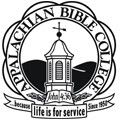 Appalachian Bible College
Appalachian Bible College
$10,030 - 2.
 West Virginia University at Parkersburg
West Virginia University at Parkersburg
$14,405 - 3.
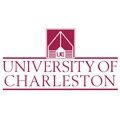 University of Charleston
University of Charleston
$19,375
- 4.
 West Virginia School of Osteopathic Medicine
West Virginia School of Osteopathic Medicine
$2,000 - 5.
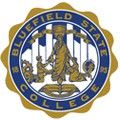 Bluefield State College
Bluefield State College
$20,500 - 6.
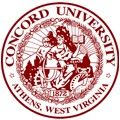 Concord University
Concord University
$21,500
West Virginia College Grad Debt Vs. National Average
Median Federal Student
Loan Debt After Graduation
Source: College Scorecard
Note: Rankings/data represent 4-year public and private nonprofit schools only.
Best Wisconsin Colleges for Maximizing Earnings Potential
What a graduate makes after college depends upon several factors, but sometimes the college they graduated from plays a role. These six schools produce the highest paid alumni ten years after they graduated college. We also compared their earnings in Wisconsin to the national average for a better view of what future graduates can expect.
- 1.
 Appalachian Bible College
Appalachian Bible College
$10,030 - 2.
 West Virginia University at Parkersburg
West Virginia University at Parkersburg
$14,405 - 3.
 University of Charleston
University of Charleston
$19,375
- 4.
 West Virginia School of Osteopathic Medicine
West Virginia School of Osteopathic Medicine
$2,000 - 5.
 Bluefield State College
Bluefield State College
$20,500 - 6.
 Concord University
Concord University
$21,500
West Virginia College Grad Debt Vs. National Average
Median Federal Student
Loan Debt After Graduation
Source: College Scorecard
Note: Rankings/data represent 4-year public and private nonprofit schools only.
Best Wisconsin Colleges for Minimizing College Debt
A great paycheck is nice, but student loan debt can make an income look like a lot less. These colleges have produced the alumni with the lowest student debt in Wisconsin. We also compared the state against the national average so all aspiring students can see what they might expect in terms of student debt after attending a Wisconsin college.
- 1.
 Appalachian Bible College
Appalachian Bible College
$10,030 - 2.
 West Virginia University at Parkersburg
West Virginia University at Parkersburg
$14,405 - 3.
 University of Charleston
University of Charleston
$19,375
- 4.
 West Virginia School of Osteopathic Medicine
West Virginia School of Osteopathic Medicine
$2,000 - 5.
 Bluefield State College
Bluefield State College
$20,500 - 6.
 Concord University
Concord University
$21,500
West Virginia College Grad Debt Vs. National Average
Median Federal Student
Loan Debt After Graduation
Source: College Scorecard
Note: Rankings/data represent 4-year public and private nonprofit schools only.
Beyond Tuition: Wisconsin Cost of Living
Students who intend to earn a two-year or four-year degree through Wisconsin colleges should also look at the cost of living in the area. Understanding how much housing, groceries and transportation typically cost can help with careful budgeting. Fortunately, the overall cost of living in Wisconsin is slightly lower than the national average. We looked at the cost of living in the state and in metro areas to give students an overview of what their monthly bills might look like.
| area | composite index | housing | groceries | utilities | transportation | health care | misc. |
|---|---|---|---|---|---|---|---|
| Statewide Average | 97% | 88% | 100% | 102% | 101% | 111% | 98% |
| Eau Claire | 97% | 80% | 103% | 94% | 107% | 110% | 104% |
| Green Bay | 94% | 80% | 90% | 110% | 104% | 107% | 97% |
| Janesville | 98% | 92% | 97% | 113% | 101% | 109% | 96% |
| Madison | 105% | 112% | 103% | 92% | 106% | 122% | 101% |
| Milwaukee-Waukesha | 100% | 99% | 103% | 109% | 98% | 117% | 96% |
Source: The Council for Community and Economic Research
Wisconsin College Accreditation
Accreditation is a process of validation for colleges and universities. In order to earn accreditation, a college or university must be evaluated by an independent accrediting body, which will ensure the school meets the high standards of a quality education. By attending an accredited school, students can typically expect that their credits will transfer, they will have more opportunities for financial aid and future employers will accept their degree as high quality and valid. The Higher Learning Commission (HLC) is the regional accrediting body for Wisconsin. In addition to institutional accreditation earned through HLC, colleges can also seek accreditation for specific programs. These accrediting bodies focus on one particular field or subject. Here are a few examples:
- The American Dental Association, Commission on Dental Accreditation accredits the dental assisting program at Blackhawk Technical College.
- The Midwifery Education Accreditation Council accredits the direct-entry midwife program at Southwest Wisconsin Technical College.
Wisconsin Cities With a Large College Presence
Madison
Madison is home to ten colleges, technical schools and universities. Big industries, according to the Madison Region Economic Partnership, include healthcare, advanced manufacturing and agricultural sectors, but there is also big growth from biotechnology, bio-medical industries and bio-agriculture. Several leading global companies have settled in Madison, including satellite offices of Google and Microsoft. Madison colleges and universities are poised to help students prepare for jobs in these industries and many others.
| College Name | School Type | Annual Net Price | Annual Median Earnings 10 Years After College Only includes former students who received federal financial aid. |
|---|---|---|---|
 University of Wisconsin-Madison University of Wisconsin-Madison |
Public | $18,387 | $51,000 |
| University of Wisconsin-Madison has many claims to fame, including a ranking in the Forbes Top 10 for producing the most Fortune 500 CEOs, a ranking in the top five in national research spending every year since 1972, and 19 faculty and alumni receiving the Nobel Prize. Founded in 1848, the college now enrolls over 43,000 students across 13 schools and colleges. The university adheres to the Wisconsin Idea, which is the belief that the university should improve people's lives beyond the classroom. | |||
 Madison Area Technical College Madison Area Technical College |
Public | $8,664 | $34,600 |
| MATC, also referred to simply as Madison College, began in 1912 as a vocational school for 14-to-16-year-old dropouts. Today, with seven regional campuses to provide students with two-year degrees and credentials, Madison College offers strong transfer planning and routinely saves students over $13,000 per year in the pursuit of their bachelor's degrees. The school offers more than 140 programs, either on campus or online, for almost 40,000 students. | |||
 Edgewood College Edgewood College |
Private not-for-profit | $21,339 | $40,900 |
| This private school, founded in the Dominican Catholic tradition, is home to 2,800 students. The student faculty ratio is an impressive 11-to-1, and more than 80 percent of classes have fewer than 20 students. Ninety-eight percent of incoming freshmen receive financial aid. Study abroad and internship opportunities are heavily encouraged. Students can choose from 60 majors and more than 40 minors, or they can create individualized programs. | |||
Milwaukee
Home to over two dozen colleges, vocational schools and universities, Milwaukee is ready to meet the demands of a growing student population. The city has racked up numerous accolades for their business and tech friendly accomplishments. Students seeking to work in any number of industries in Milwaukee can get started at one of these schools.
| College Name | School Type | Annual Net Price | Annual Median Earnings 10 Years After College Only includes former students who received federal financial aid. |
|---|---|---|---|
 Milwaukee Area Technical College Milwaukee Area Technical College |
Public | $9,174 | $30,500 |
| MATC is home to over 38,000 students, who can choose from 78 associate degrees, 77 technical diplomas, 45 certificates and 28 apprenticeship programs. Of those programs, 24 are online, seven are accelerated and five are bilingual. The most popular programs include those in business, health sciences, liberal arts, and technology and applied sciences. Within six months after graduation, 87 percent of graduates are either furthering their education or are employed. | |||
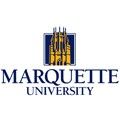 Marquette University Marquette University |
Private not-for-profit | $28,920 | $55,600 |
| A Catholic and Jesuit university, Marquette has 11 colleges and schools located in the heart of Milwaukee. More than 8,300 undergraduates and 3,200 professional and graduate students pursue one of 87 majors and programs in law, dentistry and medicine. Marquette has made many rankings lists over the years, such as the "Best Values in Private Colleges 2016" by Kiplinger's Personal Finance. | |||
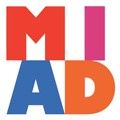 Milwaukee Institute of Art and Design Milwaukee Institute of Art and Design |
Private not-for-profit | $23,541 | $30,600 |
| MIAD was founded in 1974 as the successor to the Layton School of Art. A small school, MIAD offers majors in communication design, industrial design, illustration, interior architecture and design, and fine arts. Eight minors in areas like writing and advertising complement those majors. The student body is 740 strong, with a student-to-faculty ratio of 1-to-15. Ninety-eight percent of students receive financial aid. | |||
Source: College Scorecard
Wisconsin College Resources for Further Research
Students seeking information on college resources in Wisconsin can start with this list, which covers several organizations, associations, portals and boards dedicated to helping students prepare for college in Wisconsin.
This portal, connecting students with hundreds of scholarship opportunities, is meant for those who live in the Milwaukee area.
State of Wisconsin Higher Education Aids BoardThis state agency is responsible for management and oversight of the student financial aid system, including grants, scholarships and loan programs.
Wisconsin AheadThis organization is dedicated to the goal of ensuring disabled students have a strong presence in higher education and is committed to increasing universal design on campuses and promoting easy transitions from high school to college.
Wisconsin Association of Independent Colleges and UniversitiesPrivate, non-profit colleges work together to create policies, collaborative programs and accessibility measures that encourage students to attend college and succeed once there.
Wisconsin Educational Approval BoardThis agency is charged with evaluating and approving technical, trade, career and degree-granting schools as well as online programs.
Wisconsin Indian Education AssociationThis association encourages and promotes education opportunities for American Indian students in the state. Students can find information on financial aid and scholarships through this organization.
Wisconsin's Private CollegesThis consortium of private colleges in the state offers a wealth of information on each college, including financial aid options, resources for students and potential majors and minors.
LearnHowToBecome.com is an advertising-supported site. Featured or trusted partner programs and all school search, finder, or match results are for schools that compensate us. This compensation does not influence our school rankings, resource guides, or other editorially-independent information published on this site.
View the most relevant programs for your interests and compare them by tuition, acceptance rate, and other factors important to you.